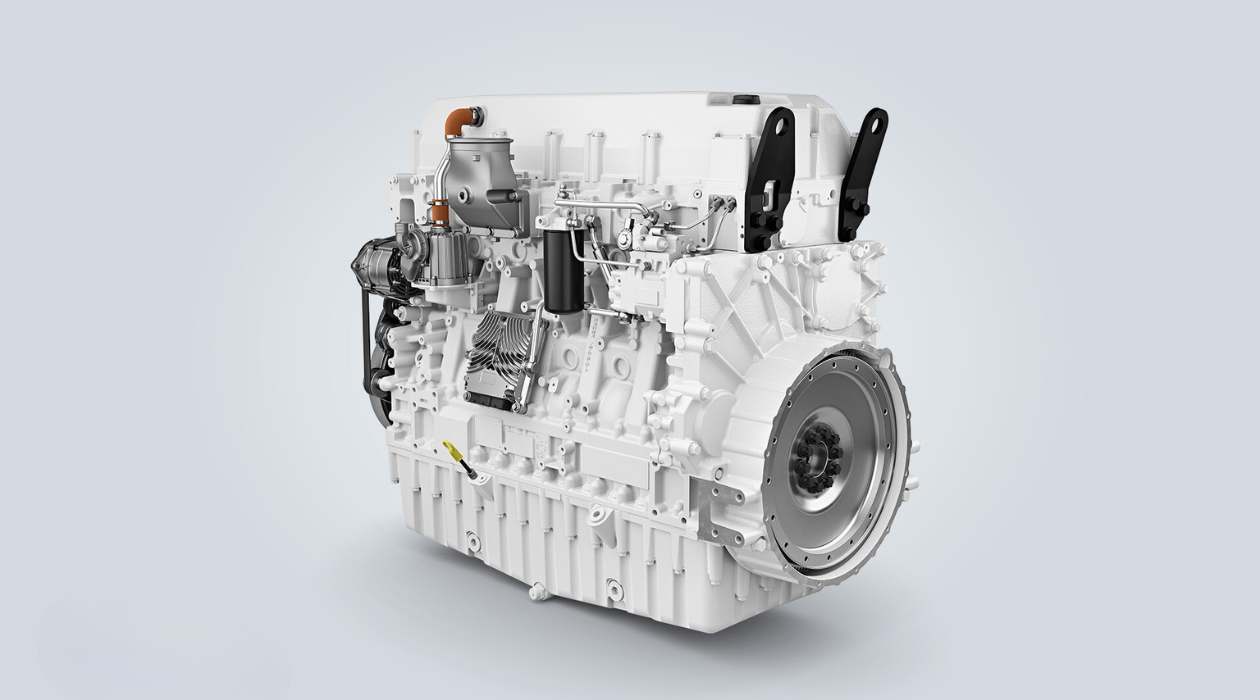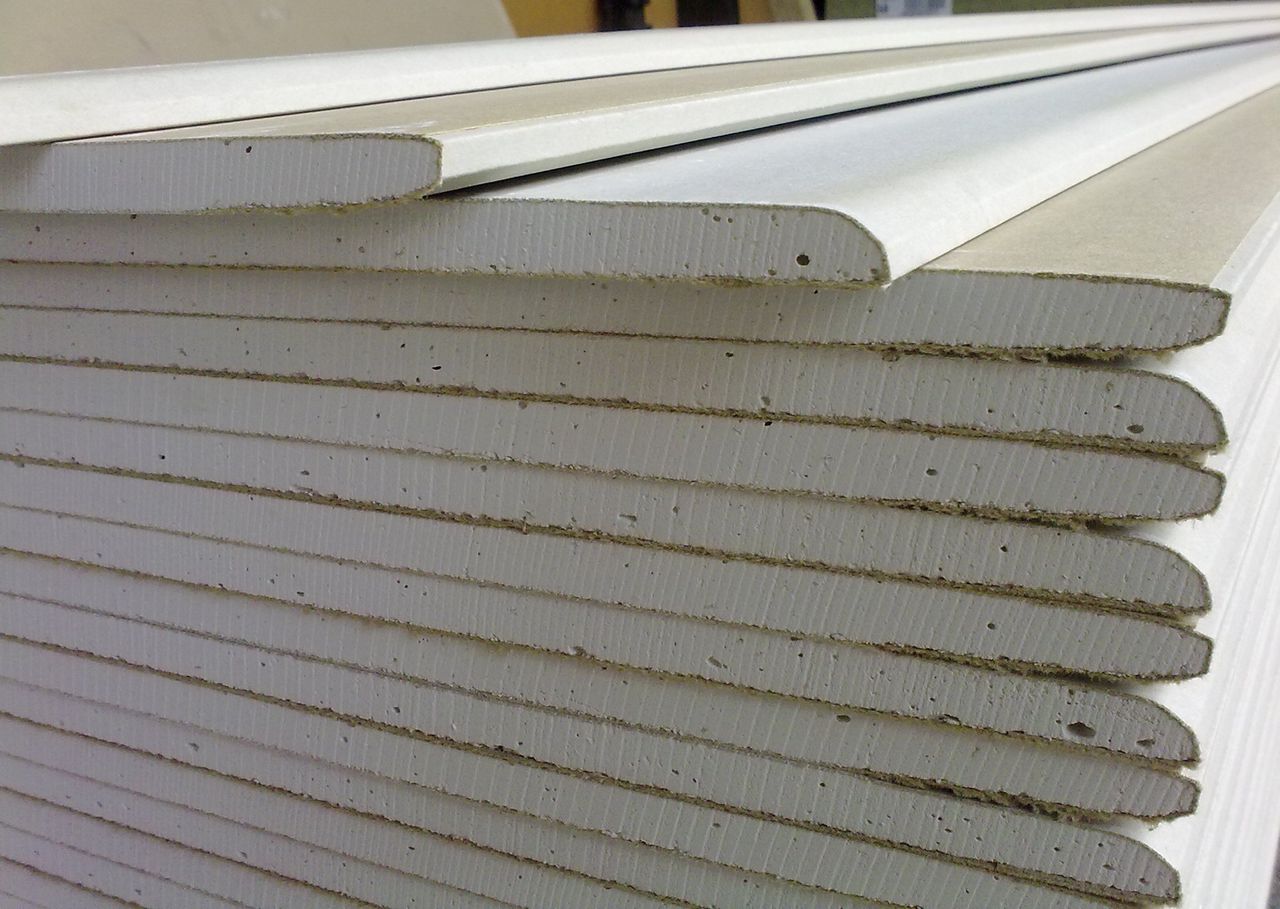Home>diy>Building & Construction>What Are The Most Common Types Of Engine Construction


Building & Construction
What Are The Most Common Types Of Engine Construction
Modified: December 7, 2023
Learn about the various types of engine construction, including building-construction, and how they impact performance and efficiency. Discover the right technology for your needs.
(Many of the links in this article redirect to a specific reviewed product. Your purchase of these products through affiliate links helps to generate commission for Storables.com, at no extra cost. Learn more)
Introduction
When it comes to engine construction, there are various types of engines that are commonly used in different sectors and industries. Each type of engine has its own unique characteristics and benefits, making them suitable for specific applications. From inline engines to flat engines, rotary engines to radial engines, and even electric engines, the construction of these engines plays a vital role in their performance and efficiency.
In this article, we will explore the most common types of engine construction and delve into their distinctive features. Whether you’re a building construction enthusiast, an automotive enthusiast, or simply curious about the inner workings of engines, this article will provide you with valuable insights into the fascinating world of engine construction.
So, let’s dive in and explore the different types of engine construction, their advantages, and their applications in various industries. Whether you’re working in the construction field, the automotive industry, or simply interested in engines, this article will equip you with a comprehensive understanding of the most common types of engine construction.
Key Takeaways:
- Inline engines offer simplicity, cost-effectiveness, and balanced power delivery, making them popular in various vehicles from everyday commuting to performance-oriented cars.
- Electric engines provide high efficiency, instant torque, and quiet operation, shaping the future of sustainable transportation and revolutionizing the automotive industry.
Inline Engines
Inline engines, also known as straight engines, are one of the most common types of engine construction. These engines are characterized by having all the cylinders arranged in a straight line. This design allows for a compact and efficient engine layout.
One of the key advantages of inline engines is their simplicity and ease of maintenance. With all the cylinders lined up in a single row, it is easier to access and service each cylinder individually. This makes inline engines popular choices in various applications, including automobiles, motorcycles, and small aircraft.
Inline engines also offer good fuel efficiency and a smooth power delivery. The inline configuration allows for a balanced crankshaft design, which helps to minimize vibrations and maximize power output. This makes inline engines suitable for both performance-oriented vehicles and everyday commuting.
Furthermore, inline engines are relatively cost-effective to produce compared to other engine types. The straightforward design and manufacturing process contribute to the affordability of inline engines, making them widely used in mass-produced vehicles.
However, inline engines do have some limitations. Due to their elongated shape, they can be more difficult to fit into tight engine bays. Additionally, the length of the engine can lead to increased weight distribution towards the front of the vehicle, potentially affecting handling characteristics.
Despite these limitations, inline engines remain a popular choice for various applications due to their simplicity, efficiency, and affordability. Many iconic vehicles, such as the Volkswagen Beetle and Ford Mustang, have utilized inline engines successfully.
In summary, inline engines are widely adopted due to their simplicity, ease of maintenance, and cost-effectiveness. They offer a balanced power delivery, good fuel efficiency, and find applications in a range of vehicles. Whether you’re a car enthusiast or an aspiring engineer, inline engines are an important topic to understand in the world of engine construction.
V-shaped Engines
V-shaped engines, also known as V engines, are another common type of engine construction. As the name suggests, the cylinders in these engines are arranged in a V shape, with two banks of cylinders meeting at a predetermined angle.
One of the key advantages of V-shaped engines is their compact design. By angling the cylinders in a V-shape, the overall width of the engine is reduced. This allows for better packaging in tight engine bays and provides more flexibility in vehicle design.
V engines also offer a good balance between performance and efficiency. The V configuration allows for a shorter, stiffer crankshaft, which reduces engine vibrations and allows for higher revs. This can result in increased power output and improved performance, making V engines popular in high-performance vehicles.
Furthermore, V engines can be designed to accommodate different numbers of cylinders, ranging from 4 cylinders in a V4 configuration, up to 12 cylinders in a V12 configuration. This flexibility allows for a wide range of power options and applications, from compact cars to luxury sports cars and even heavy-duty trucks.
However, V-shaped engines also have some drawbacks. One of the main challenges is the increased complexity of the engine design, as compared to inline engines. The angled cylinder arrangement requires additional components like a more complex intake and exhaust manifold system, resulting in increased manufacturing and maintenance costs.
In addition, the V-shaped design may lead to uneven heat distribution and potential cooling challenges, especially for the rear cylinders. Engine designers need to carefully consider cooling solutions, such as water jackets or oil coolers, to maintain optimal operating temperatures throughout the engine.
Despite these challenges, V-shaped engines remain popular due to their compactness, performance capabilities, and broad range of applications. Many renowned automakers, such as Ferrari and Mercedes-Benz, are known for their high-performance V engines.
In summary, V-shaped engines offer a combination of compact design, performance, and versatility. They are favored for their power output and find applications in a wide range of vehicles. Whether you’re a car enthusiast or an engineer, understanding V-shaped engines is crucial in recognizing the diversity of engine construction.
Flat Engines
Flat engines, also known as horizontally-opposed engines or boxer engines, are a unique type of engine construction where the cylinders are arranged in two banks on opposite sides of the crankshaft and lie flat, horizontally opposed to each other.
One of the most distinctive features of flat engines is their low profile. The horizontally opposed cylinder configuration allows these engines to have a lower center of gravity, which contributes to improved stability and handling characteristics in vehicles.
Flat engines also offer excellent engine balancing due to the symmetrical firing order of the cylinders. This results in minimal vibrations, smooth operation, and reduced noise levels. Additionally, the flat design allows for efficient cooling and heat dissipation, as the large surface area promotes effective airflow across the engine banks.
Another advantage of flat engines is their compactness. The flat layout makes these engines suitable for installation in vehicles with limited space, such as sports cars and aircraft. Additionally, the compact design can lead to improved weight distribution and better handling performance.
However, flat engines do have some drawbacks. One of the challenges is the increased complexity of the engine design, especially when it comes to the intake and exhaust system. The opposing cylinder banks require more intricate manifold designs to ensure equal air and fuel distribution to each cylinder.
In addition, flat engines tend to have a wider profile, which can limit the aerodynamic efficiency of a vehicle. This can result in slightly reduced top speed and fuel efficiency compared to other engine types.
Despite these challenges, flat engines are favored by certain vehicle manufacturers and enthusiasts for their unique characteristics. Brands like Porsche and Subaru have embraced flat engines in their sports cars and performance vehicles.
In summary, flat engines offer advantages such as a low profile, balanced operation, and efficient cooling. They find applications in various vehicles, particularly those that prioritize stability, handling, and compactness. Whether you’re a car enthusiast or an engineering enthusiast, exploring the world of flat engines provides valuable insights into engine construction.
Rotary Engines
Rotary engines, also known as Wankel engines, are a unique type of engine construction that differs from conventional piston engines. Instead of using pistons, rotary engines utilize a rotor that spins in a circular motion within a housing.
One of the key advantages of rotary engines is their compact and lightweight design. The absence of pistons, connecting rods, and overhead valves allows for a simpler and smaller engine layout. This makes rotary engines ideal for applications where space and weight are critical, such as in small aircraft and racing cars.
Rotary engines also offer a high power-to-weight ratio and the ability to rev rapidly. The rotating motion of the rotor enables the engine to produce smooth and continuous power delivery, resulting in a unique driving experience. This characteristic has made rotary engines popular among car enthusiasts, particularly in vehicles like the Mazda RX-7 and RX-8.
Another advantage of rotary engines is their ability to achieve high RPMs (revolutions per minute). This enables them to generate significant horsepower without needing a large displacement. As a result, rotary engines can offer impressive performance in smaller, lightweight vehicles.
However, rotary engines do have some limitations. One of the main challenges is their fuel consumption and emissions. The design of rotary engines tends to have higher fuel consumption compared to piston engines. Additionally, the combustion process in rotary engines can lead to higher emissions, particularly in terms of hydrocarbon and nitrogen oxide pollutants.
Moreover, rotary engines require meticulous maintenance to ensure optimal performance and longevity. The apex seals, which seal the combustion chambers as the rotor rotates, are prone to wear and proper lubrication is crucial to prevent damage and maintain performance.
Despite these limitations, rotary engines continue to captivate automotive enthusiasts and find applications in certain niche markets. The unique characteristics of these engines, along with their distinct sound and performance, make them the heart of many iconic sports cars.
In summary, rotary engines offer a compact design, high power-to-weight ratio, and rapid revving capability. They are favored by enthusiasts for their unique driving experience. Whether you’re a car enthusiast or simply intrigued by engine construction, exploring the world of rotary engines provides a glimpse into the unconventional side of automotive engineering.
When considering engine construction, it’s important to understand the most common types, including inline, V, flat, and rotary engines. Each type has its own advantages and disadvantages, so it’s important to consider the specific needs of your vehicle or application.
Radial Engines
Radial engines are a type of engine construction that features cylinders arranged in a circular pattern around a central crankshaft. This arrangement gives the engine a distinct “star” or “spider” appearance and is commonly found in aircraft engines.
One of the key advantages of radial engines is their reliability and simplicity. The design allows for even distribution of the workload among the cylinders, resulting in smooth operation and balanced power delivery. Additionally, radial engines have fewer moving parts compared to other engine types, making them less prone to mechanical failures.
Radial engines are known for their high torque output, which makes them particularly suitable for applications that require a lot of low-end power, such as in propeller-driven aircraft. The design of radial engines allows for efficient cooling of the cylinders, as the airflow passes over each cylinder in a radial pattern, enhancing their performance and durability.
Another advantage of radial engines is their ability to withstand high levels of G-forces and extreme operating conditions. The robust construction and distributed load-bearing nature of the cylinders make radial engines ideal for rough environments and demanding applications.
However, radial engines also have some limitations. One of the challenges is their large size and weight, which can significantly impact the overall weight and balance of an aircraft. This can affect the maneuverability and performance of the aircraft, particularly in terms of speed and fuel efficiency.
In addition, the radial design can result in increased drag due to the exposed, protruding cylinders. This can limit the top speed of an aircraft compared to engines with more streamlined designs. However, these limitations were outweighed by the benefits of radial engines, leading to their popularity during the early era of aviation.
While radial engines are not as commonly used in modern aviation, they still hold a significant place in history and are cherished by aviation enthusiasts. The unique appearance, distinctive sound, and reliability of radial engines continue to captivate and inspire awe among aircraft enthusiasts and historians alike.
In summary, radial engines offer simplicity, reliability, and high torque output. They are associated with the early days of aviation and continue to be admired for their unique appearance and historical significance. Whether you’re an aviation enthusiast or someone interested in engine construction, exploring the world of radial engines provides a fascinating journey into the past.
Wankel Engines
Wankel engines, also known as rotary engines, are a unique type of engine construction that differs from traditional piston engines. Instead of using reciprocating pistons, Wankel engines utilize a rotating triangular rotor that moves within an oval-shaped housing.
One of the key advantages of Wankel engines is their compact and lightweight design. The absence of pistons, connecting rods, and valves results in a much simpler and smaller engine layout. This makes Wankel engines ideal for applications where space and weight are critical, such as in motorcycles and small aircraft.
Wankel engines also offer several performance benefits. The triangular rotor’s continuous rotational motion allows for smoother power delivery with fewer vibrations compared to piston engines. This characteristic enables Wankel engines to rev quickly and reach high RPMs, making them responsive and capable of providing excellent acceleration.
An additional advantage of Wankel engines is their simplicity. With significantly fewer moving parts, these engines have fewer components that can fail, reducing the overall complexity and maintenance requirements. This simplified design also means that Wankel engines can be more cost-effective to produce and maintain.
However, Wankel engines do face some challenges. One of the main concerns is their fuel consumption and emissions. Due to the design’s inherent characteristics, Wankel engines have traditionally been less fuel-efficient compared to piston engines. However, advancements in technology and improvements in design have helped to address this issue in modern Wankel engines.
In addition, sealing is crucial for the optimal performance of Wankel engines. The apex seals, which seal the combustion chambers as the rotor moves, need to maintain a tight seal to prevent loss of compression and ensure efficient combustion. Proper maintenance and lubrication are important to prevent premature wear of these seals.
Despite these challenges, Wankel engines have found success in certain applications. Mazda, in particular, has championed Wankel engines, producing iconic sports cars like the Mazda RX-7 and RX-8 that have showcased the unique characteristics of these engines.
In summary, Wankel engines offer a compact design, smooth power delivery, and simplicity. They have found particular popularity in the automotive industry, where their unique characteristics can provide an engaging driving experience. Whether you’re a car enthusiast or simply interested in engine construction, exploring the world of Wankel engines provides a glimpse into the innovative side of automotive engineering.
Electric Engines
Electric engines, also known as electric motors or electric propulsion systems, have gained significant attention in recent years with the growing emphasis on sustainability and reducing carbon emissions. Unlike traditional combustion engines, electric engines rely on the conversion of electrical energy into mechanical energy to generate motion.
One of the key advantages of electric engines is their high efficiency. While combustion engines have inherent energy losses due to processes such as combustion and heat dissipation, electric engines can convert a higher percentage of electrical energy into mechanical energy. This efficiency contributes to reduced energy consumption and improved overall performance.
Electric engines also offer instantaneous torque and smooth power delivery. The electric motor’s ability to deliver maximum torque from the moment it starts rotating provides instant acceleration and responsive performance. Additionally, the absence of gears allows for a seamless and continuous power delivery, eliminating the need for gear shifts.
Another advantage of electric engines is their quiet operation. Unlike combustion engines with their inherent noise and vibrations, electric engines operate silently, making for a more peaceful driving experience. This characteristic also has the added benefit of reducing noise pollution in urban areas.
Furthermore, electric engines have fewer moving parts compared to combustion engines, leading to reduced maintenance and longer lifespans. Electric motors are known for their reliability and durability, with fewer components that can wear out or require frequent servicing.
However, electric engines face certain challenges. One of the main concerns is range limitations and battery technology. While advancements have been made in battery technology, electric vehicles still have a limited range compared to traditional gasoline vehicles. Additionally, recharging times can be longer compared to refueling with gasoline.
Infrastructure for charging stations is also a consideration for electric vehicle owners. Widespread charging infrastructure is crucial to support the growing number of electric vehicles and alleviate range anxiety for drivers.
Despite these challenges, the popularity of electric engines continues to rise. Major automotive manufacturers are investing heavily in electric vehicle development, and governments worldwide are implementing initiatives to promote electric vehicle adoption.
In summary, electric engines offer high efficiency, instant torque, and quiet operation. They are a crucial component of electric vehicles and are gaining momentum as the world shifts towards sustainable transportation. Whether you’re an environmental advocate or simply interested in the future of transportation, exploring the world of electric engines provides valuable insights into the evolving landscape of automotive technology.
Conclusion
Engine construction plays a vital role in various industries, from automotive to aviation, and beyond. Understanding the different types of engine construction provides valuable insights into their unique characteristics, advantages, and applications. In this article, we explored some of the most common types of engine construction, including inline engines, V-shaped engines, flat engines, rotary engines, radial engines, Wankel engines, and electric engines.
Inline engines offer simplicity, ease of maintenance, and cost-effectiveness, making them widely used in various applications. V-shaped engines provide a balance between performance and efficiency, with a compact design that allows for versatility in power options. Flat engines offer a low profile, balanced operation, and efficient cooling, making them suitable for stability and compactness requirements.
Rotary engines, although less common nowadays, offer compactness, high power-to-weight ratio, and rapid revving capabilities, providing a unique driving experience. Radial engines, known for their reliability, simplicity, and high torque output, have a rich history in aviation and continue to captivate enthusiasts. Wankel engines, also known as rotary engines, offer a compact design, smooth power delivery, and simplicity, finding popularity in certain sports cars. Electric engines, driven by the growing emphasis on sustainability, provide high efficiency, instant torque, and quiet operation, shaping the future of transportation.
While each type of engine construction has its own advantages and limitations, they all contribute to the ever-evolving landscape of engineering and technology. Continued advancements in engine construction are expected as industries strive for increased performance, efficiency, and sustainability.
Whether you’re an automotive enthusiast, an aviation expert, or simply interested in engines, exploring the diverse world of engine construction provides fascinating insights into the innovation and engineering behind the vehicles we use and admire. As the world progresses, the future of engine construction holds even more exciting possibilities, paving the way for efficient and sustainable transportation.
Frequently Asked Questions about What Are The Most Common Types Of Engine Construction
Was this page helpful?
At Storables.com, we guarantee accurate and reliable information. Our content, validated by Expert Board Contributors, is crafted following stringent Editorial Policies. We're committed to providing you with well-researched, expert-backed insights for all your informational needs.















0 thoughts on “What Are The Most Common Types Of Engine Construction”